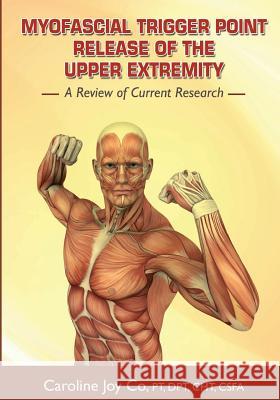Myofascial Trigger Point Release of the Upper Extremity: A Review of Current Research » książka
Myofascial Trigger Point Release of the Upper Extremity: A Review of Current Research
ISBN-13: 9781451598346 / Angielski / Miękka / 2010 / 100 str.
Course Description This course will teach myofascial trigger point release concepts. By utilizing the trigger point techniques, patients make rapid improvement in their status. Outcomes have reflected reduced therapy sessions with permanent improvement as well as the patient's ability to self-manage their condition with the home exercise programs. Methods for locating and deactivating trigger points using a variety of techniques and modalities will be explored. After reading the book, you will be able to use these techniques immediately upon return to your practice. Myofascial release involves sustained pressure and graded stretch applied to the soft tissue, which is guided entirely by the feedback obtained from the patient's body. The feedback felt by the therapist while applying the stretch determines the direction of the stretch, its duration, and the amount of force applied. From shoulder disorders to elbow injuries to debilitating hand and wrist problems, quicker improvement and more favorable outcomes are unquestionably dependent on proper rehabilitation technique and individualized, forward thinking concepts, and application. What were previously considered complementary therapeutic methods are now proven, evidence-based techniques and modalities that care for the total patient and are imperative for today's therapist. Myofascial release can benefit individuals of almost all age groups; the release of the muscle tightness (as a result of fascial involvement) facilitates the maximal elongation of the muscles, leading to a decrease in the constant pull being experienced by the tendons and other associated structures. Course Objectives 1. Demonstrate how to identify and correct for the most common factors that precipitate and perpetuate myofascial trigger points. 2. Identify techniques for deactivating trigger points including trigger point pressure release and myofascial release. 3. Interpret client history and assessment findings to ascertain irritability. 4. Utilize self-care techniques for deactivating trigger points. 5. Demonstrate trigger point palpation using STAR palpation. 6. Apply strain-counterstrain techniques and integrated neuromuscular inhibition techniques to deactivate trigger points.
Zawartość książki może nie spełniać oczekiwań – reklamacje nie obejmują treści, która mogła nie być redakcyjnie ani merytorycznie opracowana.











